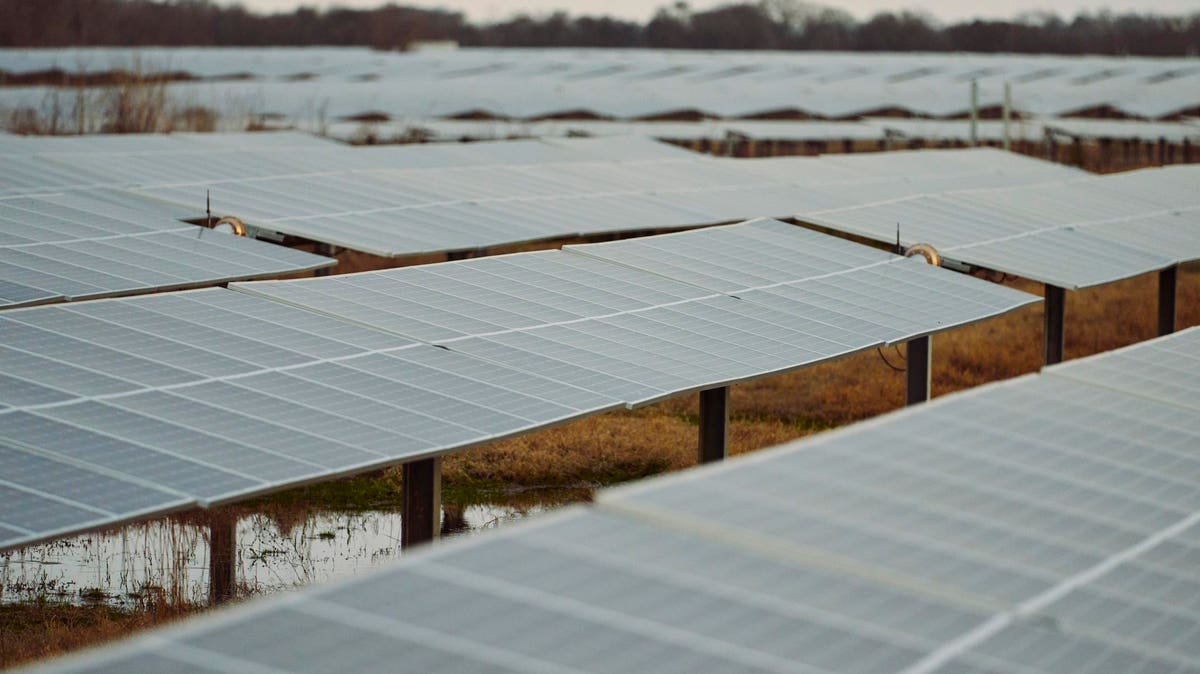Texas, along with much of the South, has been subject to a relentless, prolonged heat wave for several weeks – the kind of climate-fueled extreme weather event that scientists have warned us will happen with increasing frequency. This particular event is so extreme that Texas has been hotter than 99% of the Earth.
But unlike during Winter Storm Uri that blanketed Texas with ice and blackouts in 2021, the state’s grid has so far held up under the immense strain of powering millions of air conditioners cranked up at their highest power, driving peak demand to an all-time high of nearly 81,000 megawatts (MW), easily surpassing the 69,000 MW peak demand during the winter storm.
So, what’s the difference from 2021? How has the grid managed to function with more demand placed on it than ever before?
It’s all thanks to the rapid additions of solar, wind, and grid-scale battery storage in the last two years. Texas has added almost 3,000 MW of wind since Winter Storm Uri, and utility scale solar in the state has doubled every year since 2020, with nearly 10,000 MW of new solar added since 2020.
And here is the amazing statistic that few people know – Texas accounted for nearly 70% of grid battery additions in the U.S. in the first three months of 2023, resulting in a total capacity of 3,300 MW, almost all of which have come online since early 2021. In fact, Texas passed California last year in total installed solar and almost kept pace with California when it comes to new grid battery installations.
But during this historic heat wave, it’s been all these new, low-cost wind, solar and batteries that have kept the grid afloat and Texans cool – in many cases saving lives. Solar and wind provided 35% of statewide power last Tuesday and generated a record 31,500 MW Wednesday, which more than covered the 9,600 MW of electricity lost when extreme heat knocked several natural gas and coal plants offline. And just as solar power started falling in the evening, batteries kicked in immediately to get Texas through the most difficult part of the day when the sun was setting but the ACs were still cranking.
This all tallies with what energy system researchers have been saying for years: A combination of wind, solar, and battery storage are often more reliable than fossil fuel generation to handle periods of extremely high demand, especially if these peaks occur for short durations during a day.
Coal and gas plants are much more vulnerable to failure during extreme weather events than renewables and batteries, as we’ve seen in both these Texas events. Equipment froze during Winter Storm Uri at natural gas and coal plants and natural gas pipelines, while coal and gas plants have been forced offline during the current heat wave. Coal and gas plants are extremely complex facilities with numerous valves, pipelines, and other moving parts, introducing so many points of failure when tested in extreme environments. Solar, wind and, batteries have few moving parts and are much less complex, making them less prone to weather-caused failure.
This heat wave makes recent efforts by the Texas legislature to punish renewables in the name of politics even more harmful. To score petty political points, they are exposing Texans to a more unreliable grid while worsening the climate problem that’s subjecting their state to extreme events.
And on top of this, creating a reliable Texas grid with renewables, storage and, efficiency will actually result in cheaper electricity rates for Texans. Recent Energy Innovation modeling found that tapping available federal clean energy tax credits from the Inflation Reduction Act would cut annual statewide energy expenditures a cumulative $21 billion through 2050, while increasing Texas’ GDP by $15 billion in 2030.
What’s not to like about a reliable, resilient grid that someone will pay you to take?
It’s not too late for Texas policymakers to redirect their energy to aid Texans. They can make it easier to build renewables and storage by streamlining the clean energy interconnection process, facilitating transmission buildout, pushing for greater regional grid coordination, and dedicating funding for public utility commissions and state agencies to maximize Inflation Reduction Act funding, among other initiatives. At the same time, policymakers should institute measures that encourage energy efficiency and demand response. Their citizens will thank them for making their lives better and helping them adapt to climate change.
Read the full article here





